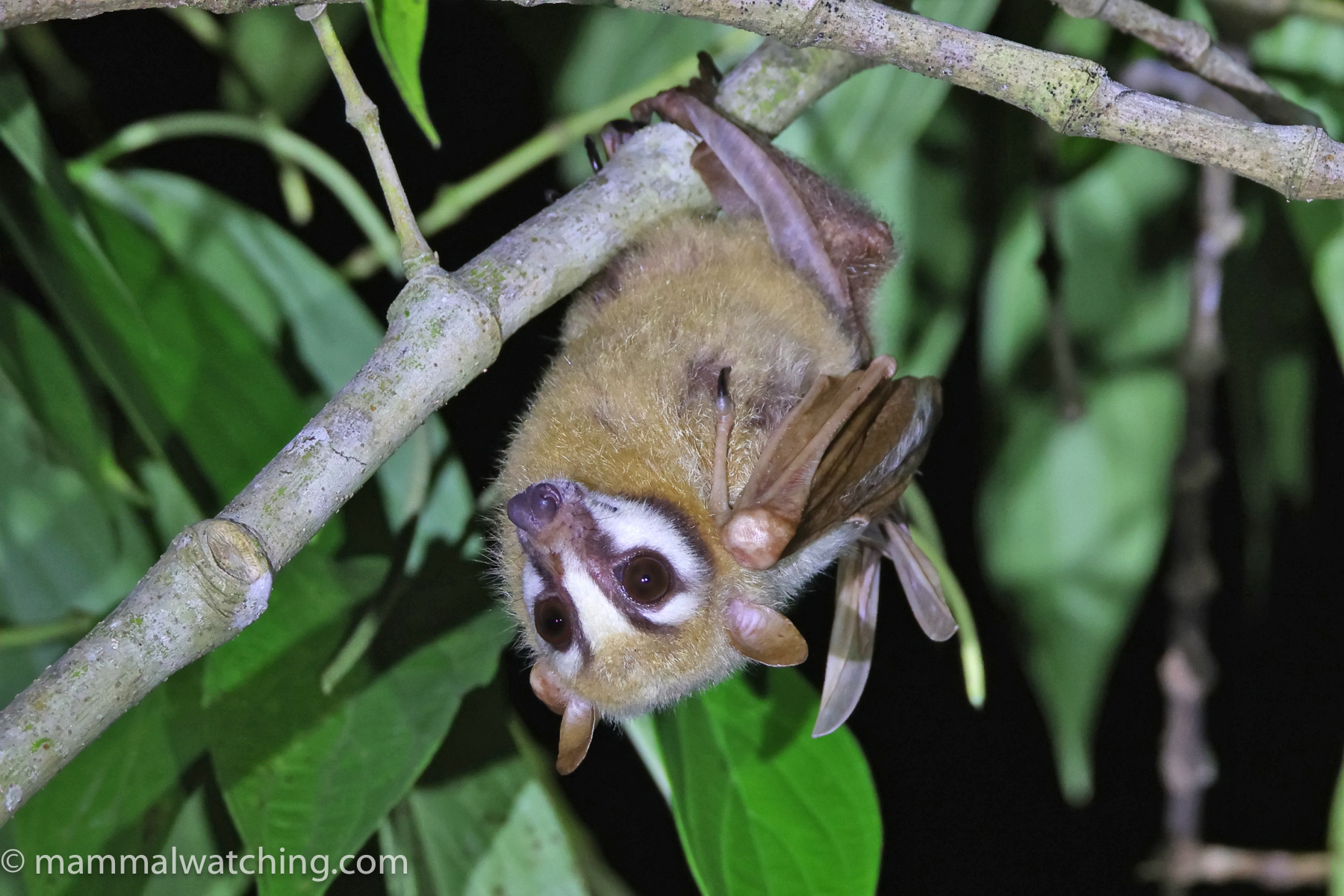
Three Nights in the North Moluccas (Halmahera & Ternate)
I spent most of September in Indonesia. A spectacular two weeks in Sulawesi with Carlos Bocos was the main event, though there were so many mammals – and so many still to identify – that that report is still several weeks away. On either side of Sulawesi I spent a few days on Sumatra, Java plus Halmahera and Ternate in the north Molucca (Maluku) Islands.
I will write separate reports for each trip though not in chronological order. I suppose I could try to unveil my Indonesian adventure in the style of Pulp Fiction, putting plot twists in plain sight in this report, knowing they will only make sense when you have read the final installment. Or maybe it is easier to simply explain that my camera broke a few days into the Sulawesi trip and so all the photos in this report were taken on János Oláh’s camera, and taken primarily by János himself.
I may have pushed the shutter release for a few of these images, but János generously gave me carte blanche to treat all pictures as if they were my own. Clearly – given how good they are – most of them are not my own. But I am happy to take credit for other people’s work. Some might say I have made a career out of that.
Halmahera
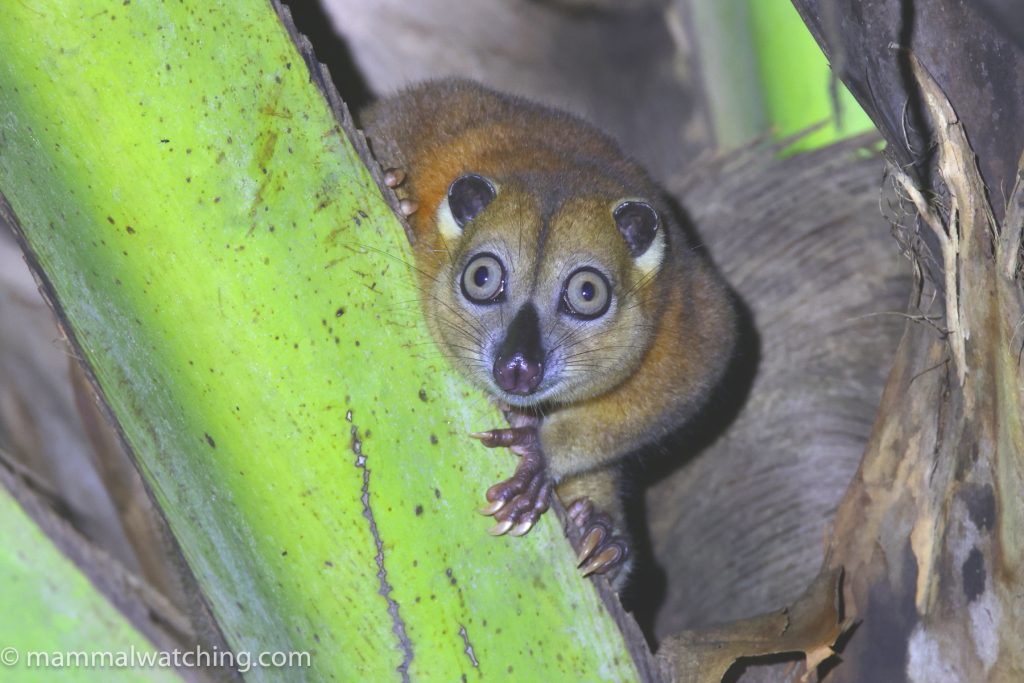
Moluccan (Ornate) Cuscus (Phalanger ornatus)
At the end of our Sulawesi tour, János Oláh and I flew to Ternate for three nights in the north Moluccas. Carlos helped us plan the trip: three days seemed enough time to find the key mammals we were chasing and provide János with two mega-bird ticks: Ivory-breasted Pitta and Wallace’s Standardwing.
We booked accommodation at a homestay in Halmahera, right at the edge of the national park, with Anggi, a guide Carlos recommended from Halmahera Tours & Travel. Anggi’s family run the homestay, though he is studying and living in Ternate. Anggi made all the transport arrangements, including meeting us at Ternate Airport, and guided us in the park. He speaks pretty good English and did a great job. He could not have been more helpful. I would definitely use him again if I ever return (though – spoiler alert – now that I have seen all the mammals I suppose a return is unlikely). You can reach Anggi on WhatsApp at +62 821 3621 0902.
The tiny island of Ternate is the gateway to the North Moluccas and has direct daily flights to and from Jakarta, Makassar and elsewhere.
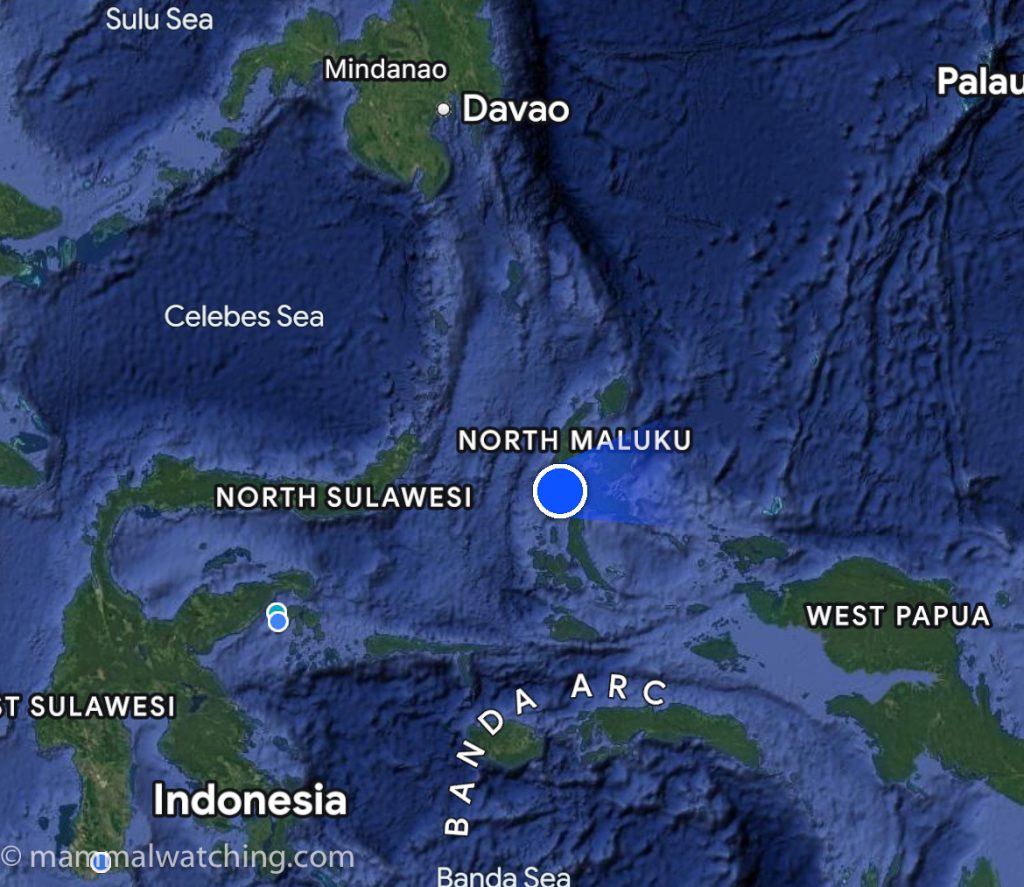
These islands really are in the middle of nowhere and the fauna owes more to Australia than it does to Sulawesi.
Anggi met us at the airport at 10:30 am. We jumped in a taxi to the ferry port where a flotilla of fast boats wait to ferry people over to Halmahera. Each boat fills in turn before making the 45 minute crossing. We only waited for a few minutes for our boat to fill and by 12:30 we were in Halmahera. From the port it is a two hour drive to Anggi’s homestay.
The homestay is simple but clean. Our rooms had electric fans, a decent bed with mosquito nets and mine came with a Thomas the Thank Engine fitted sheet set. The location could not be better: it is a two minute walk to the national park.
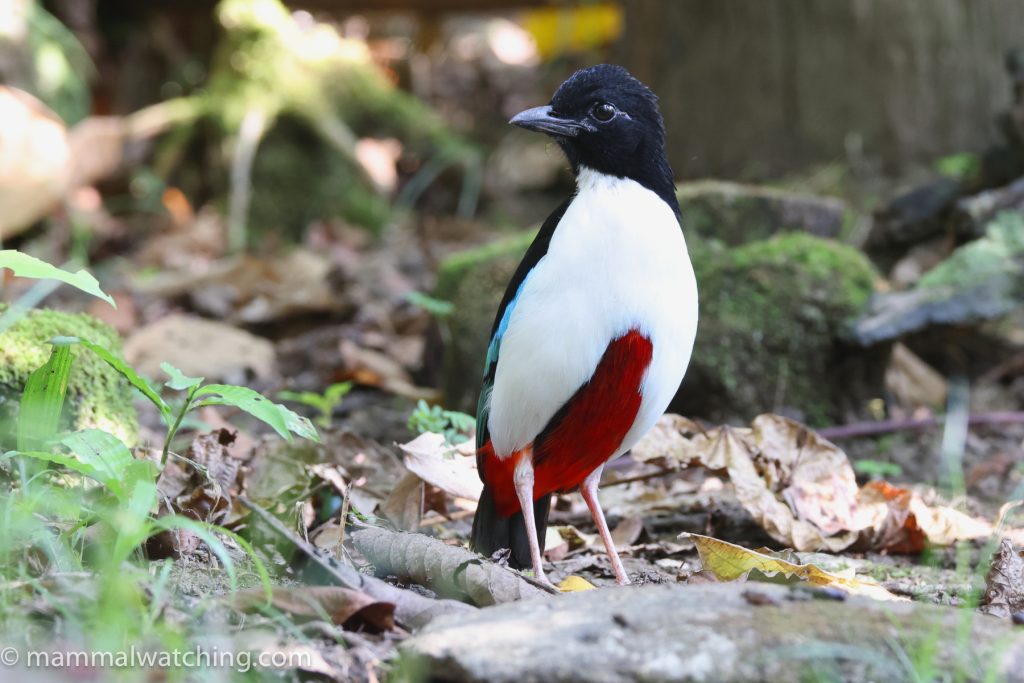
Ivory-breasted Pitta. Photo János Oláh.
I took a nap while János and Anggi headed out mid-afternoon in search of Ivory-breasted Pitta at a hide five minutes from the homestay. It didn’t take them long. When I saw the photos I wondered whether napping was the right decision.
The homestay is on the edge of a small village with fruit trees in all directions. We had two key target mammals here: Ornate Cuscus and Masked Flying Fox. I cannot remember mammalwatching being easier: we saw both species 15 minutes after walking out of the door that night.
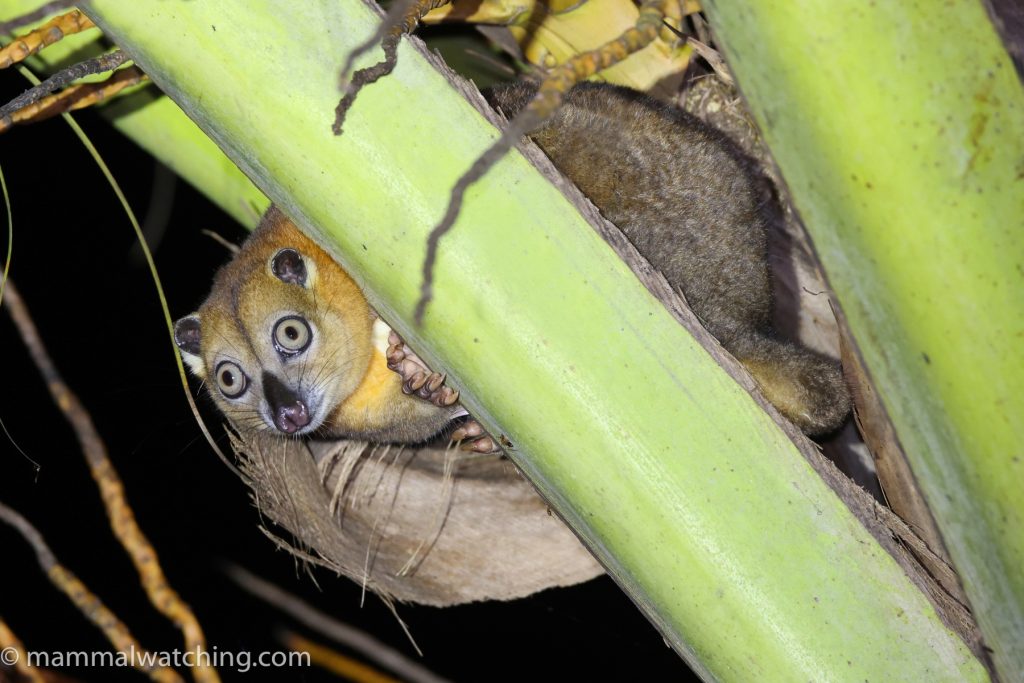
Moluccan (Ornate) Cuscus (Phalanger ornatus)
An Ornate Cuscus was obligingly perched in a palm tree no more than 50 metres from the homestay.
There were flying foxes in the gardens too. At first we saw Halmahera Bare-backed Fruit Bats, another target.
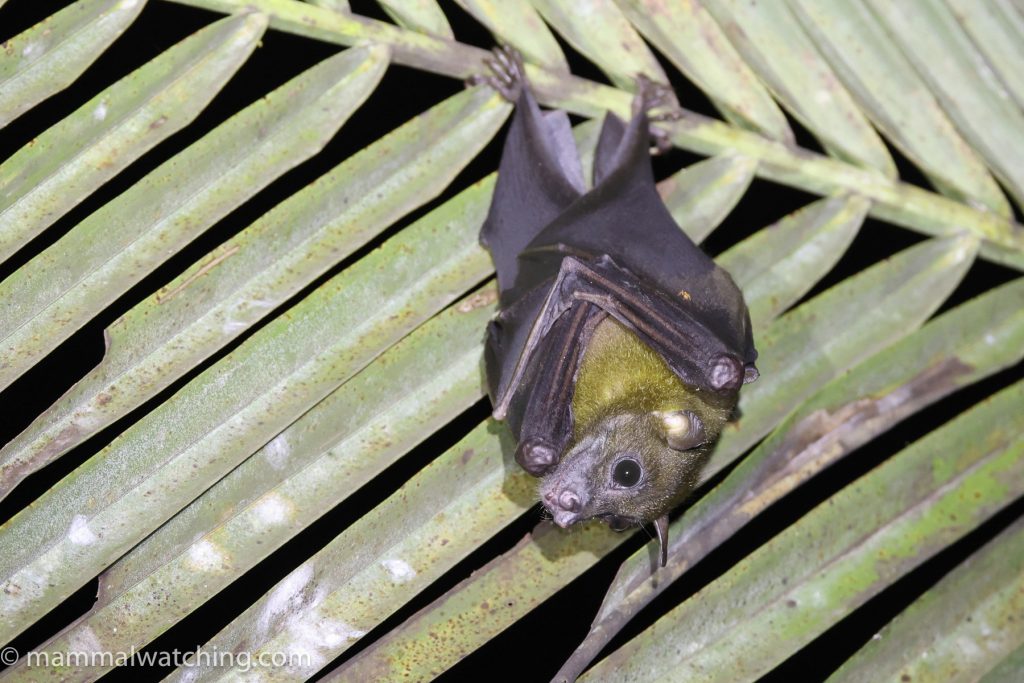
Halmahera Naked-backed Fruit Bat (Dobsonia crenulata)
And then we spotted several spectacular Masked Flying Foxes. These bats, considerably smaller than the dobsonias, are surely one of the world’s most attractive fruit bats.
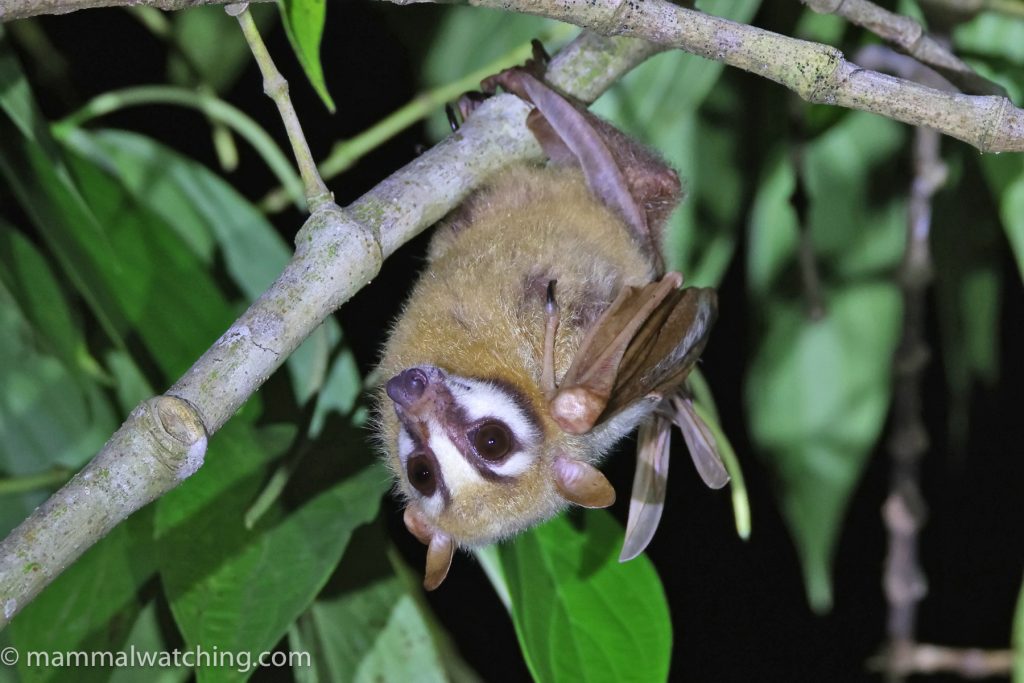
Moluccan Masked Flying Fox (Pteropus personatus)
With three lifers in the bag we strolled into the national park for an hour and found our the remaining species we were chasing.
We saw several Common Tube-nosed Bats. I had seen the species in West Papua but it was a lifer for János.
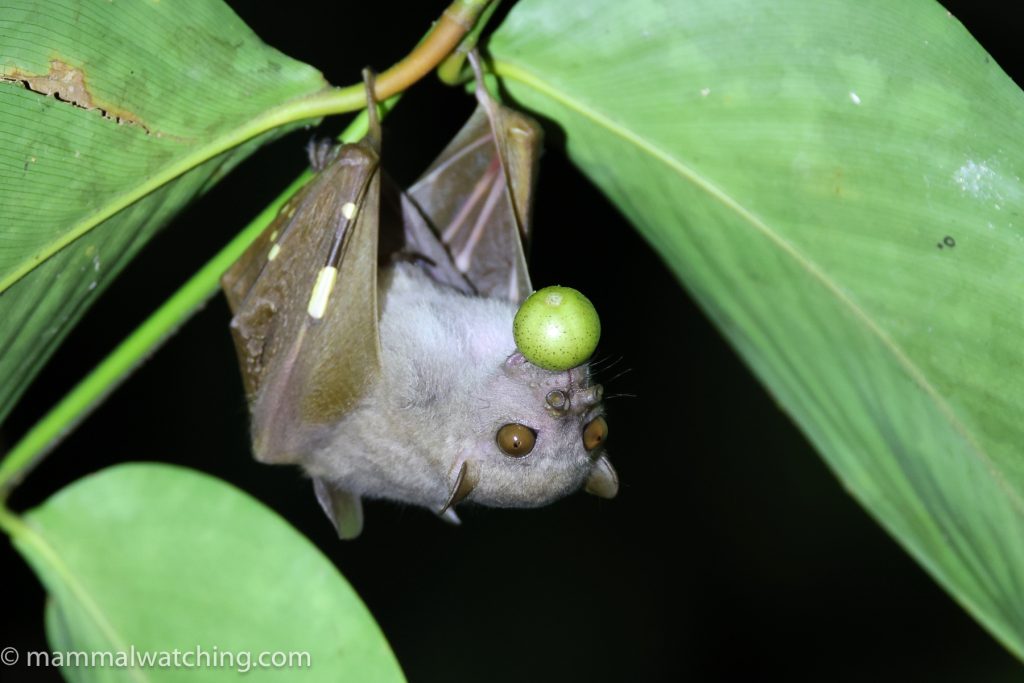
Common Tube-nosed Fruit Bat (Nyctimene albiventris)
And we also found one of the endemic Halmahera Blossom Bats, a lifer for us both and the final species I hoped to see on the island.
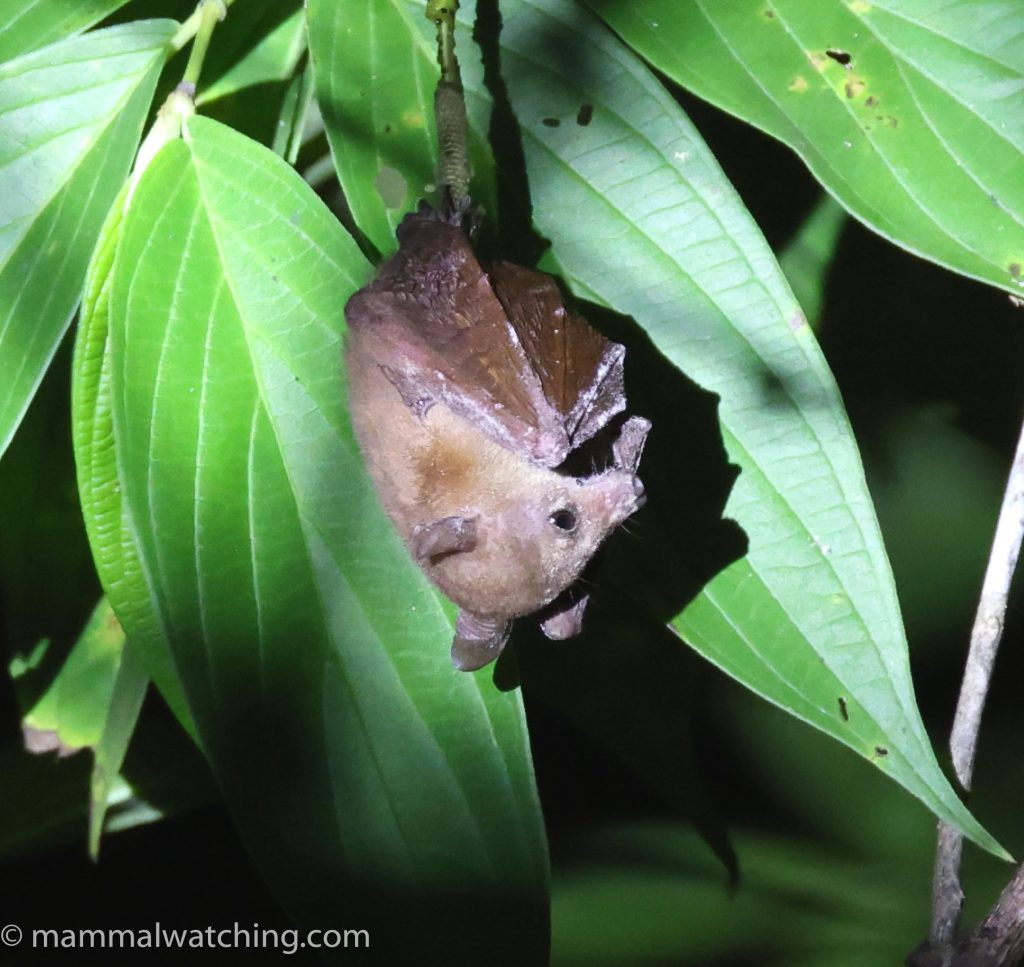
Halmaheran Blossom Bat (Syconycteris carolinae)
There were Island Flying Foxes in the forest too. Not a lifer for me but a species I wanted to see again after seeing it only once – and poorly – in Way Kambas 10 years ago.
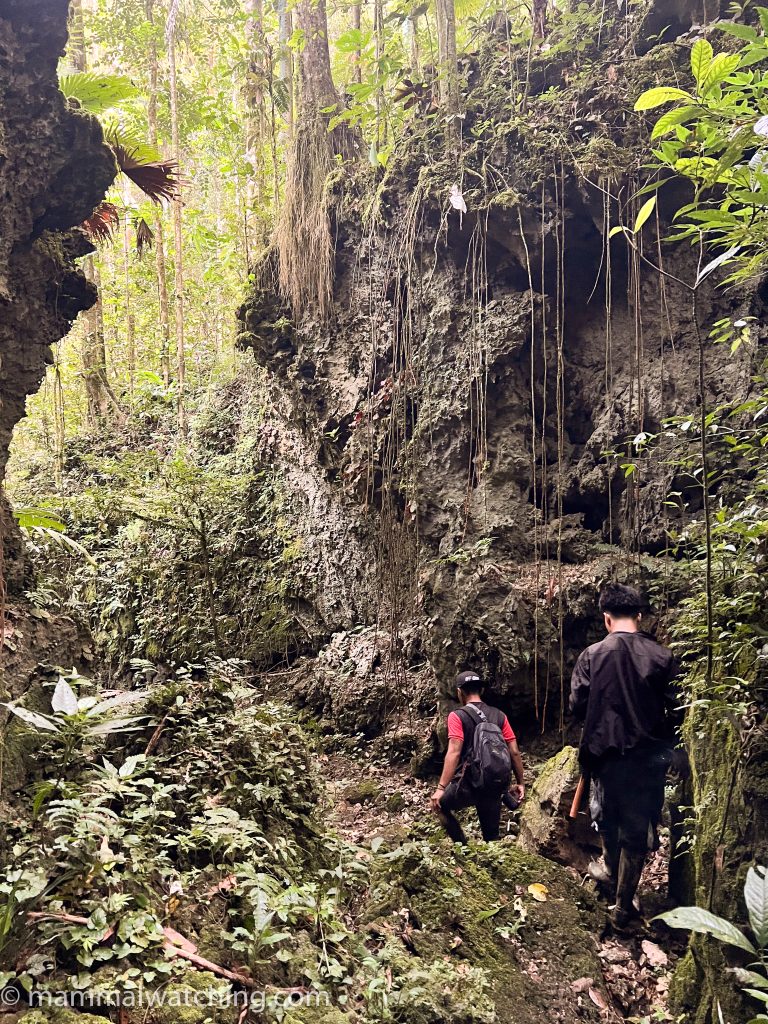
The next morning was all about the Wallace’s Standardwing. This spectacular bird of paradise lives only on Halmahera and we needed to leave the guest house at 4am to walk a few kilometres through the park to reach the lekking site by dawn.
We used our thermal scopes for the first hour or so, finding more tube-nosed bats, flying foxes and cuscuses until Anggi suggested we needed to pick up the pace if we wanted to arrive in time.
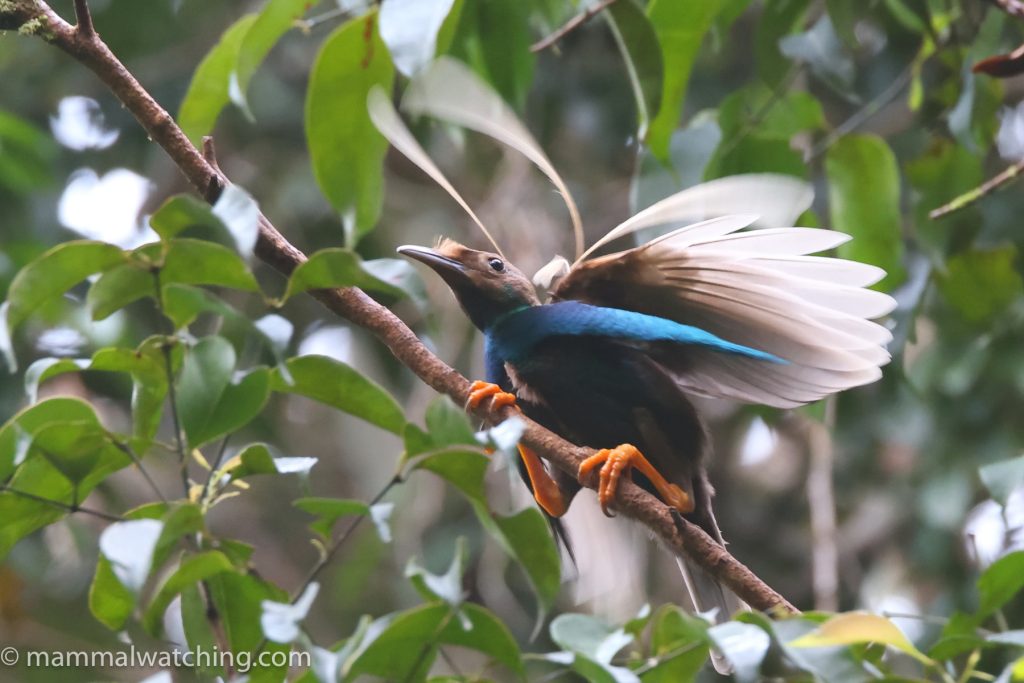
Wallace’s Standardwing. János Oláh
These birds were worth getting out of bed for! Yes I said it … don’t judge me. Watching several males displaying was one of the highlights of my time in Indonesia. And not just because of how spectacular these birds are – and they are truly spectacular. But I honestly found it quite moving to watch this scene – dancing birds desperate for some action – play out in front of me as it has done every morning for many thousands of years. The planet can be a beautiful place. Or perhaps I had had one bowl of noodles too many and it was time to leave Indonesia.
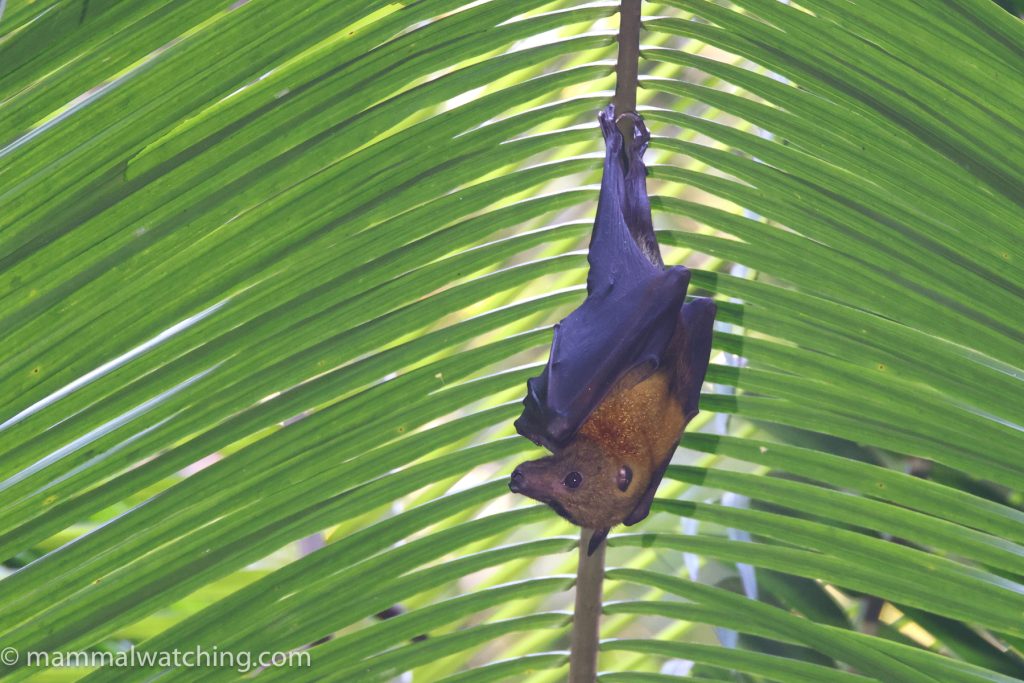
Island Flying Fox (Pteropus hypomelanus)
Walking back to the homestay Anggi showed us an Island Flying Fox roosting in its usual tree. Great to see this species in the daylight.
We also visited a small bat cave that was home to two species that I had seen in West Papua. Some Biak Roundleaf Bats.
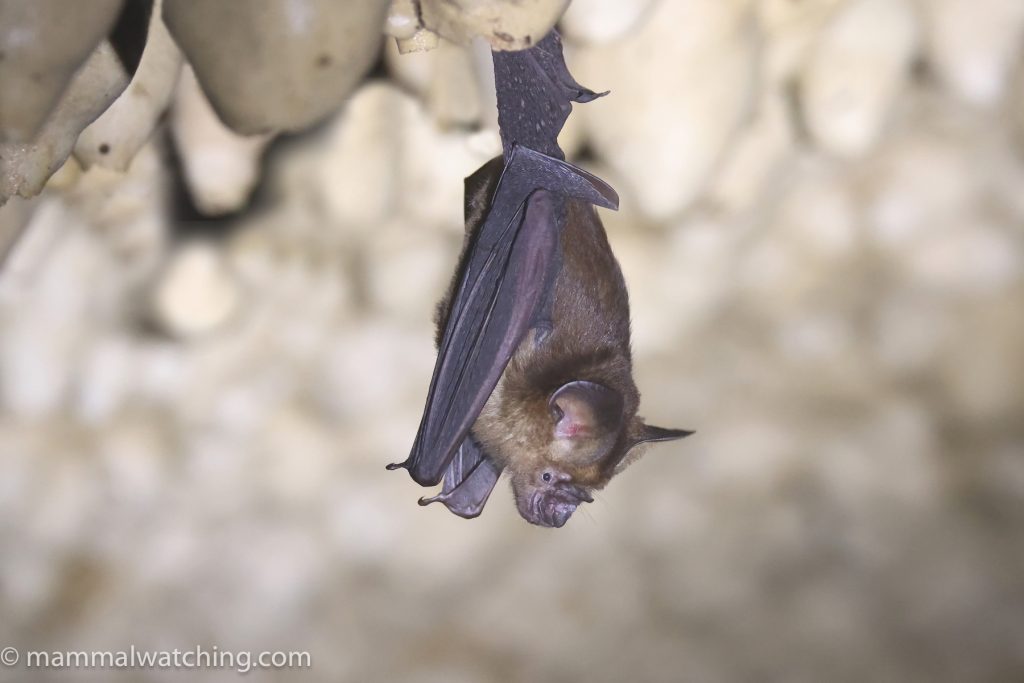
Biak Leaf-nosed Bat (Hipposideros papua)
And Raffray’s Sheathrail Bats.
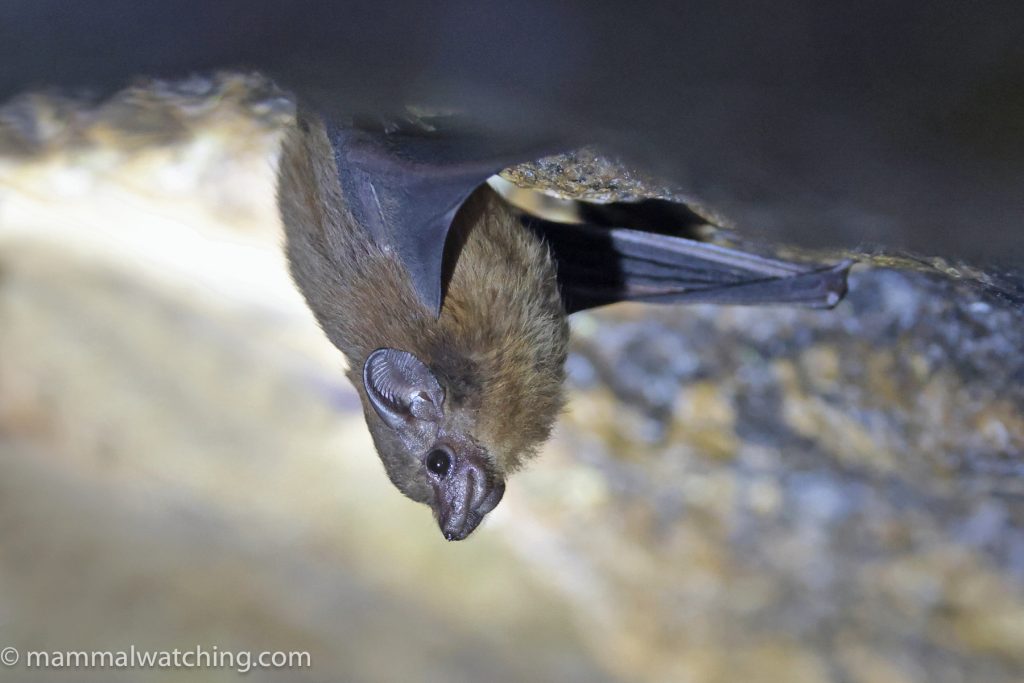
Raffray’s Sheath-tailed Bat (Emballonura raffrayana)
János and I had originally planned two nights on Halmahera and just one in Ternate. But I wasn’t feeling great and, given we had cleaned up, we asked Anggi if it would be OK to return to Ternate a day earlier than planned. Not only would this give us a bit more time to find our two target mammals there, it would also mean AC and – I am ashamed to admit it – a visit to McDonalds.
No problem at all said Anggi and an hour later we were driving back to the port and a boat to Ternate.
Ternate
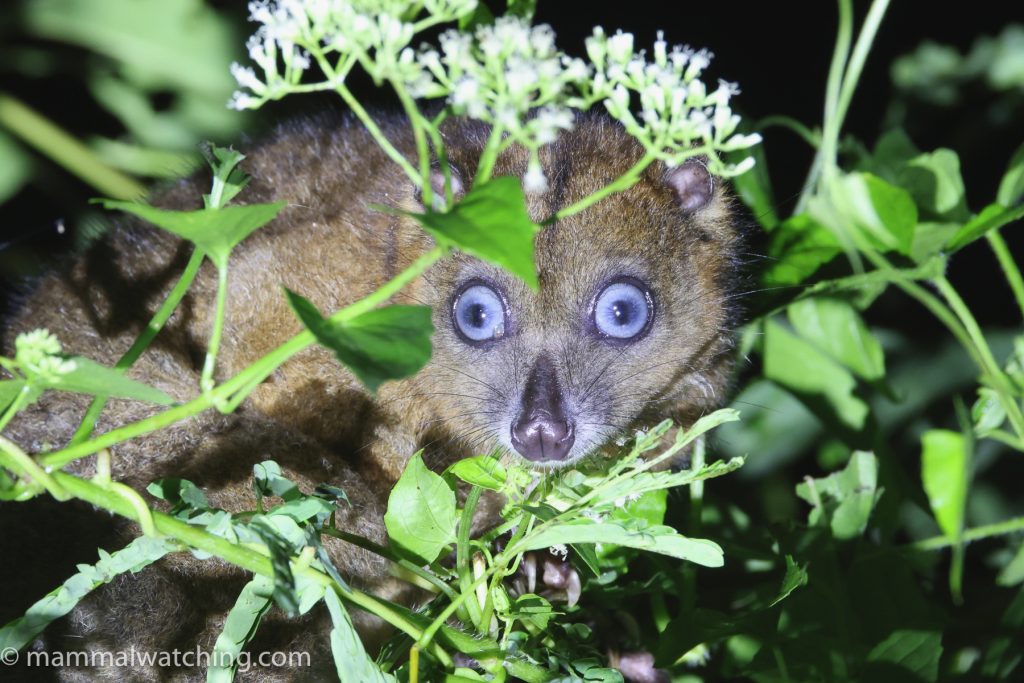
Blue-eyed Cuscus (Phalanger matabiru)
In Ternate János and I stayed at Villa Ma’Rasai, which was the nicest hotel I stayed in during my entire time in Indonesia (and only $40 a night). This lovely lodge is just out of town, and is set in a small patch of forest.
We had two key targets on Ternate: Blue-eyed Cuscus and North Moluccan – or Ashy-headed – Flying Fox.
It took less than 60 seconds to find our first cuscus in the hotel grounds after sunset. It is not hard to understand how they got their name.
Now we just needed to find the flying fox to get the clean sweep of all our target species.
There were several fruit bats in trees along the roadside in front of the hotel but all of them appeared to by Island Flying Foxes or Halmahera Naked-backed Fruits Bats. As we had been up since 3.30am we decided to have dinner and leave the other flying fox for the next day.
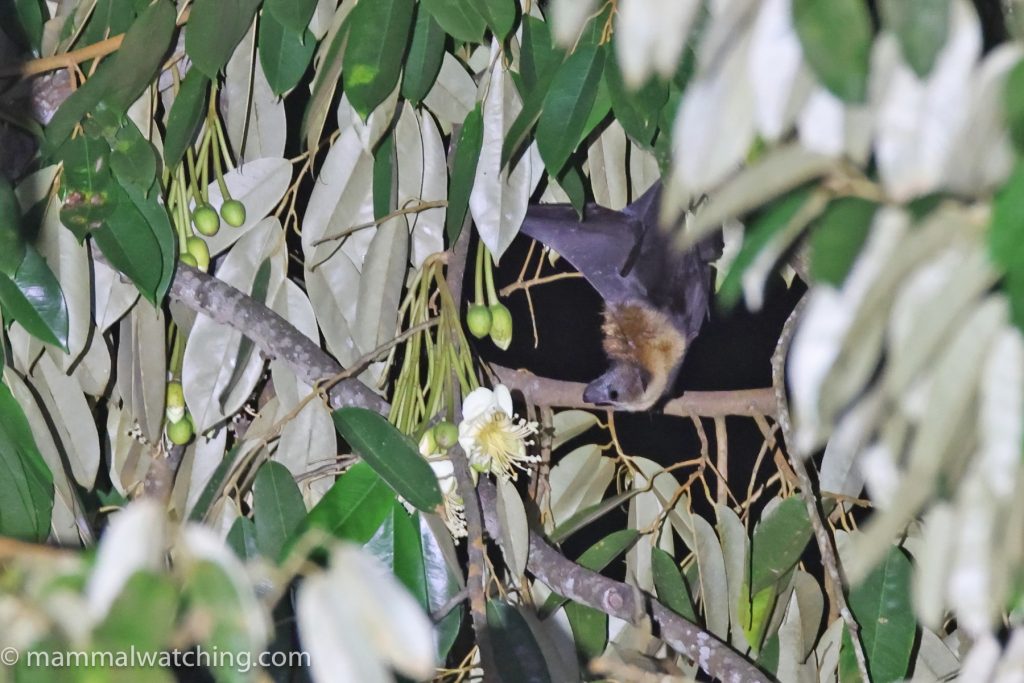
North Moluccan (Ashy-headed) Flying Fox (Pteropus caniceps)
Carlos has told us that the North Moluccan Flying Foxes might be a little trickier to find than the other mammals on our hit list. He suggested we drive along the road past the hotel and into the hills and look for flowering or fruit trees, especially breadfruit and durian trees.
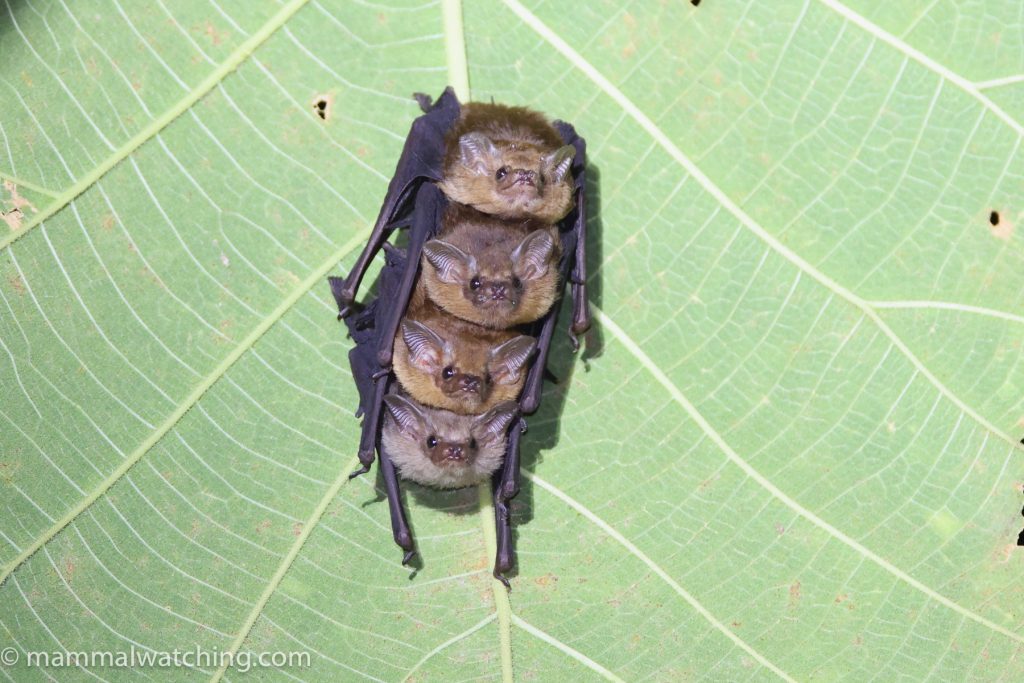
Dark Sheath-tailed Bat (Mosia nigrescens)
Anggi was happy to accompany us and so the next evening we headed out in a taxi, scanning out of the windows with thermal scopes and flashlights. Several cuscuses, Dark Sheath-tailed Bats and Island Flying Foxes later we spotted a lot of bat activity in a large flowering durian tree (somewhere around here I think).
It contained several bat species. Masked Flying Foxes were easy to identify, as were the dobsonias. A lone rousettus was likely Geoffroy’s Rousettus. There were also many larger flying foxes.
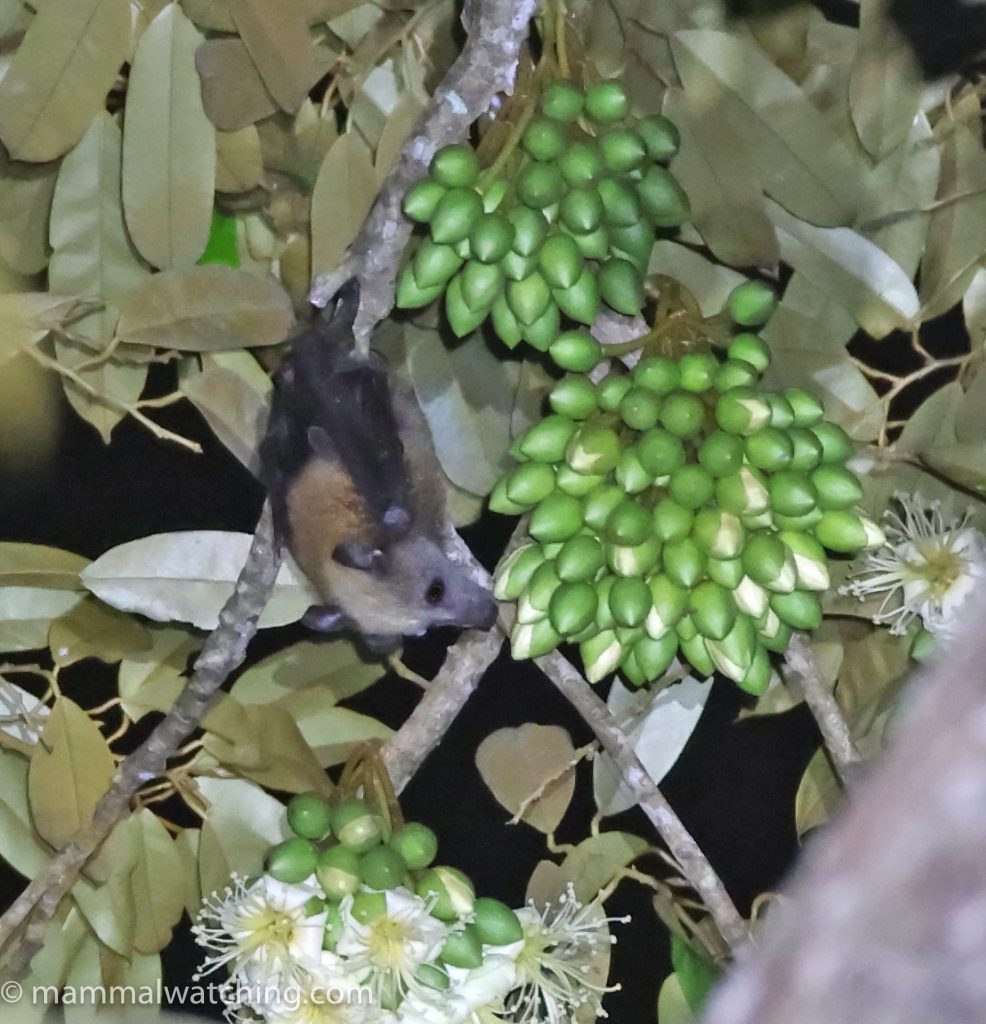
North Moluccan (Ashy-headed) Flying Fox (Pteropus caniceps)
The trouble is neither János or I knew quite what Pteropus caniceps looked like. The only photo online (and I can find nothing in books either now I am home) was from Carlos, taken on Ternate. But his flash hadn’t fired and so his picture was not a lot of help.
János and I spent a fraught 30 minutes photographing every distant flying fox that would stay still in the flashlight beam, agonizing about whether they were Island or North Moluccan Flying Foxes.
There is no shortage of Island Flying Fox photographs but this species is also called the Variable Flying Fox … because … they are variable. So trying to rule them out was annoyingly tricky.
But I feel pretty confident now that we did indeed see several of the North Moluccan – or Ashy-headed – Flying Foxes. The overall colour and in particular the face and pale crown look good for this species, and they seem less brightly colored than the Island Flying Foxes we had seen well on Halmahera. Malaysian bat expert Juliana Senawi did not think these bats were Island Flying Foxes.
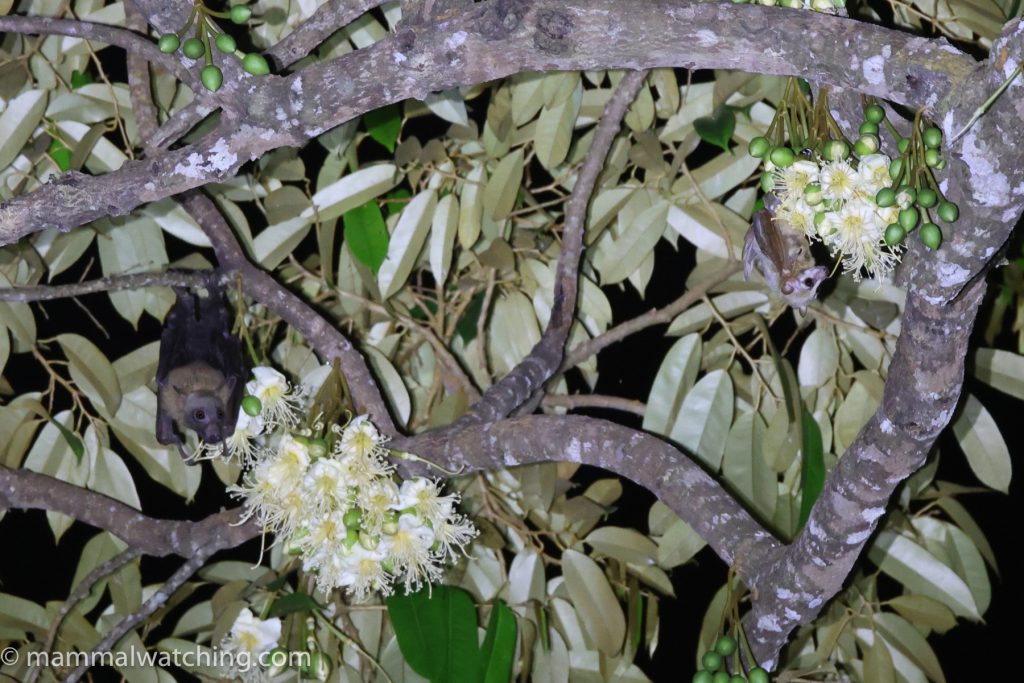
North Moluccan (Ashy-headed) Flying Fox next to a much smaller Masked Flying Fox.
When I got home I read that Pteropus caniceps are much bigger than Masked Flying Foxes and considerably larger than Island Flying Foxes too. Tim Flannery’s Mammals of the SW Pacific and Moluccan Islands says the forearm of the species is 140mm with a weight range of 400-600 grams while the Handbook of the Mammals of the World say they have a forearm of 190mm and a weight of almost 900 grams. But both both books agree that Island Flying Foxes have a forearm of around 130mm and a weight between 350-400 grams and Masked Flying Foxes have a forearm of closer to 90mm and a weight of about 120 grams. This image above demonstrates the considerable size differential, which to me looks more like what I think the difference between a masked and a north moluccan flying fox would look like. But that may be wishful thinking.vIf anyone disagrees with our ID please let me know.
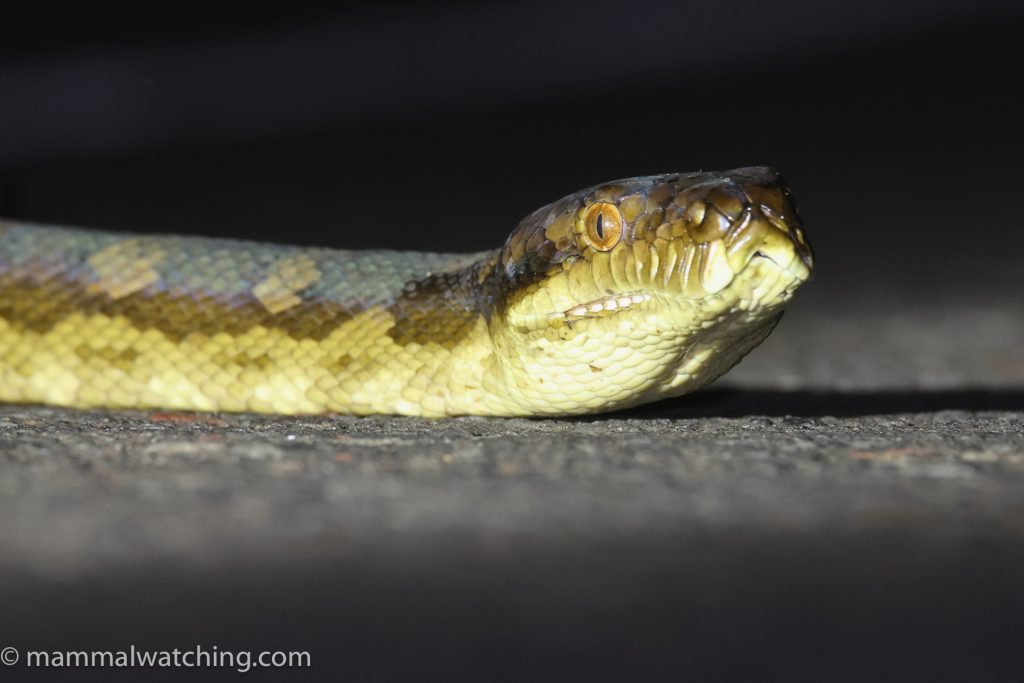
Halmahera Python
A large – 3m – Halmahera Python on the road on the way down provided some final excitement for the evening.
Many thanks to Anggi and his family for organizing and guiding our visit so well and to Janos for his excellent company, the occasional use of his camera and for all of his photos. If only mammalwatching was always this easy!
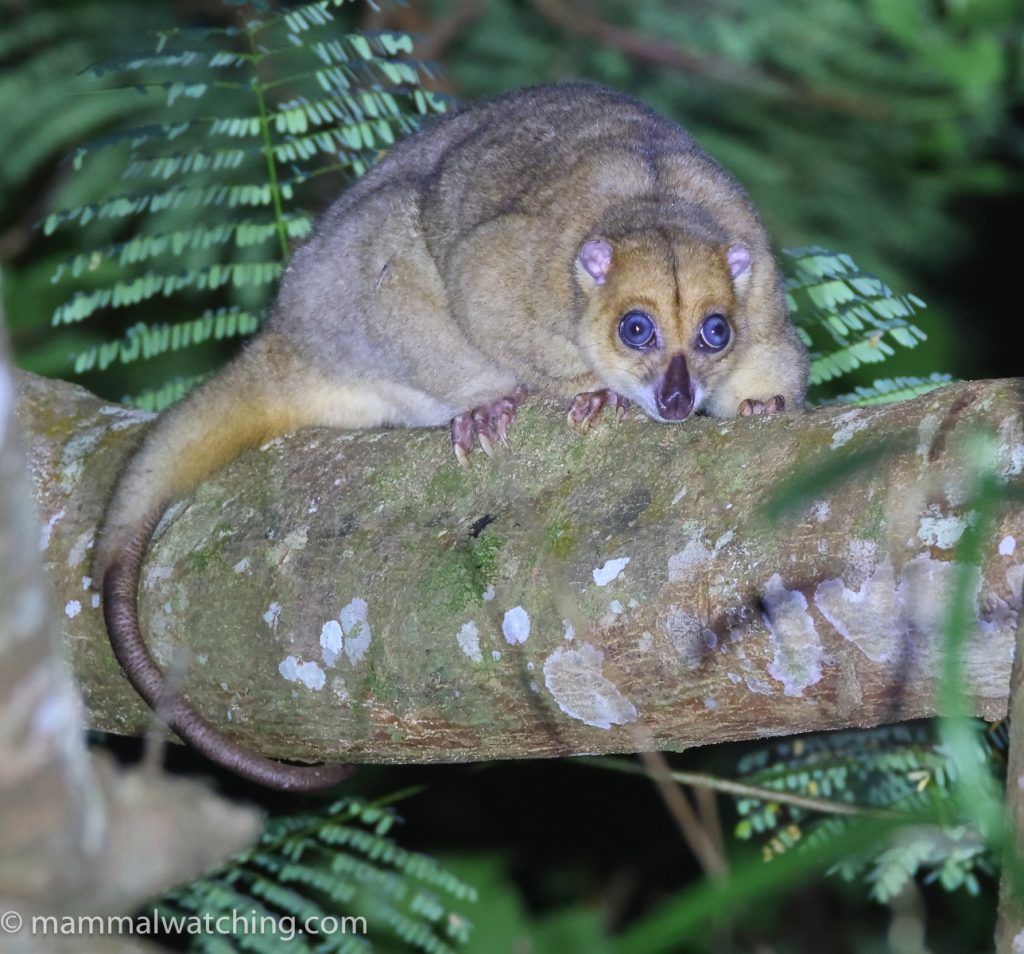
Blue-eyed Cuscus (Phalanger matabiru)
Trip List
Blue-eyed Cuscus (Phalanger matabiru)
Moluccan Cuscus (P.ornatus)
Halmahera Naked-backed Fruit Bat (Dobsonia crenulata)
Halmaheran Blossom Bat (Syconycteris carolinae)
Common Tube-nosed Fruit Bat (Nyctimene albiventris)
North Moluccan Flying Fox (Pteropus caniceps)
Island Flying Fox (P.hypomelanus)
Moluccan Masked Flying Fox (P.personatus)
Geoffroy’s Rousette (Rousettus amplexicaudatus)
Biak Leaf-nosed Bat (Hipposideros papua)
Raffray’s Sheath-tailed Bat (Emballonura raffrayana)
Dark Sheath-tailed Bat (Mosia nigrescens)
12 species, 6 lifers (bold)
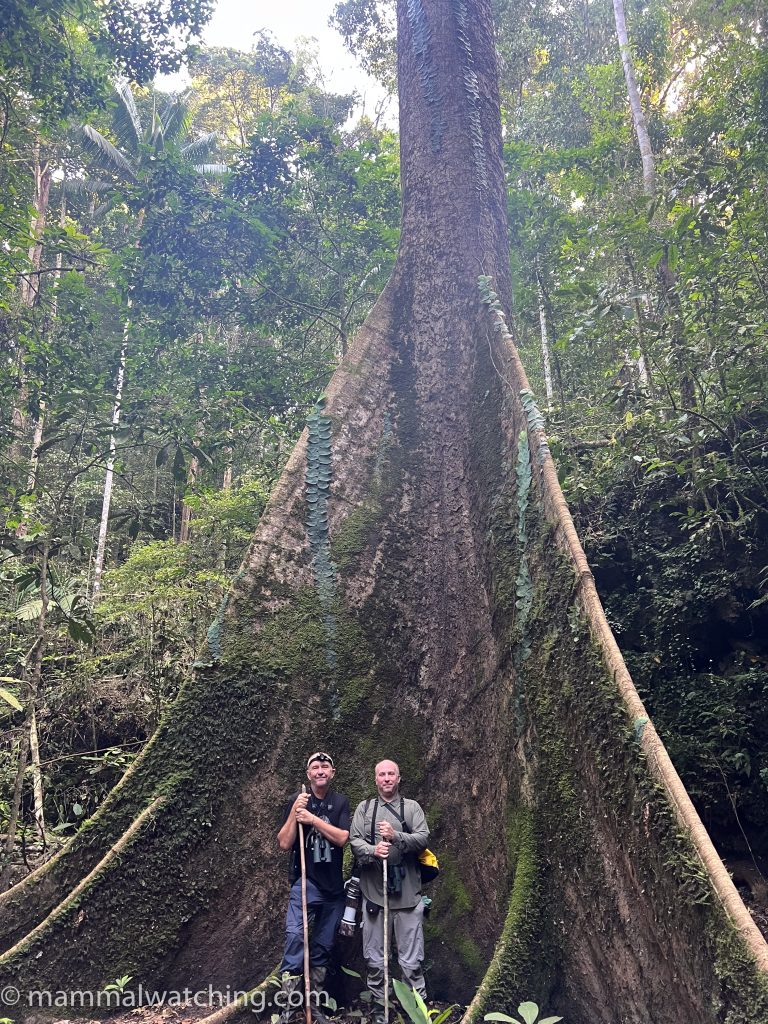
Post author


Leave a Reply
You must be logged in to post a comment.